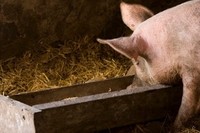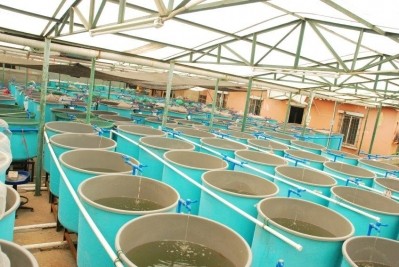‘Leftovers for Livestock’: Guide to US waste feed usage laws on offer

Researchers from the Harvard Law School Food Law and Policy Clinic (FLPC) and the Food Recovery Project at University of Arkansas School of Law have compiled a guidance document, Leftovers for Livestock, for producers interested in understanding state and federal laws around the use of waste food as feed in animal production. The guide was released earlier this month after several years of work.
In the US, about 160bn pounds of food are disposed of annually, the research team said. To grow, process, move and dispose of the unused food costs about $218bn.
The research project came about due to concerns regarding both the amount of food wasted in the US and the amount of food insecurity that continues, said Nicole Civita, director, Food Recovery Project at the University of Arkansas. It became the Food Recovery Project's Food Recovery: A Legal Guide.
“While I remain absolutely supportive of the individuals and organizations that recover wholesome, edible excess food and provide it to people in need, it is critical to remember the problems plaguing our food system are complex and interconnected,” she told FeedNavigator. “Solving America's food waste problem requires whole-system sensitive solutions.”
Food should be considered a resource, she said. When it can no longer be used for feeding people, other options need to be considered.
“The next best step, in many cases, can be to utilize food scraps to make new food,” said Civita. “Moreover, because the production of animal-based food is highly resource intensive, finding a way to produce meat, dairy, and eggs with less reliance on production of new commodity crops that make up most animal feeds helps to shrink the overall impact or footprint of these foods.”
However, the state and federal laws that regulate use of waste food as animal feed can be complicated and inaccessible, she said. “It's a bit of a maze, and even some of the state regulators we spoke to seemed confused,” she added.
“Creating [a] plain-language, easy-to-understand guide to livestock feeding laws in all 50 states should help farmers clear a major obstacle to implementing an important food conservation practice,” she said.
Guide details
Although feeding food waste or scraps to production animals, especially pigs, was once common, it declined after the practice was linked to outbreaks of diseases including foot-and-mouth disease and bovine spongiform encephalopathy (BSE), project researchers said in the guide. Federal and state laws were designed to limit the practice.
Some industrials versions of the practice, where food manufactures reuse by-products for animals feed, have continued, but smaller scale sources have been ignored, they said.
Recently, there has been increased interest in using a larger amount of properly treated food waste in animal feed, they said. And the process could be used to provide feed or feed ingredients that are less expensive than other alternatives and save money for the food waste producer or that need fewer resources.
The guide outlines the different laws and regulations in place, said Civita and specifies which restrictions are in place by state.
“Though federal law sets a regulatory floor – minimum standard – states can and do regulate the act of feeding food scraps to livestock more stringently,” she said. “Some flatly prohibit the practice, others more closely regulate particular types of food scraps or particular uses based on the type of livestock to be fed. This creates a patchwork of laws that can be especially challenging for producers operating across state lines or sourcing excess food from neighboring states.”
Additionally, the document may serve as a resource for producers looking to have state laws updated, she said. “As reduction of food waste is becoming a national imperative with strong support from the USDA [US Department of Agriculture] and EPA [Environmental Protection Agency], it is good time for state lawmakers and regulators to reconsider their bans or highly restrictive approaches to the use of excess food as animal feed,” she added.
Now that the guide has been completed, the group is looking to hear feedback from producers and regulators, said Civita. “I'd also like to think through and articulate some specific policy recommendations designed to better balance the dual goals of food safety and food conversation,” she added.







